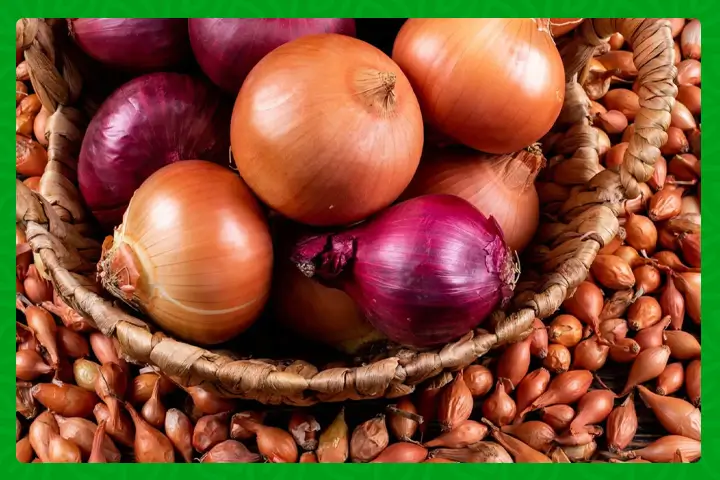
In the world of agriculture, value addition is a game-changer. It’s the secret sauce that transforms humble crops into high-demand, innovative products. Among these versatile crops is the unassuming onion, a kitchen staple that possesses incredible potential for value addition. From minimizing waste to creating a wide array of products, the journey of adding value to onions is an exciting one. In this article, we explore the various avenues of onion value addition, from minimally processed onions to the sustainable use of onion waste.
The Four Pillars of Value Addition:
Before delving into the world of onion value addition, it’s crucial to understand the fundamental ways value is added to agricultural products. There are four pillars of value addition in the agricultural value chain: product transformation, distribution, storage, and added service. With these principles in mind, let’s unlock the potential of onions.
1. Minimally Processed Onions: Freshness Unleashed
Imagine having freshly peeled and cut onions ready to use, with their crispness and flavor intact. Minimally processed onions are precisely that. They are prepared for immediate use or cooking, meticulously packed in suitable packaging materials, and stored under refrigerated or frozen conditions. This transformation not only saves time but also retains the onion’s original freshness.
2. Onion Paste: Concentrating Flavors
Onion paste is all about preserving the vibrant flavor of onions while making them more convenient for culinary use. It involves finely grinding onions while retaining their freshness. To extend the shelf life of these products, proper preservatives and packaging materials are optimized, ensuring that the essence of onions is captured in a convenient form.
3. Dehydrated Onions: Reducing Bulk, Enhancing Shelf Life
Dehydrated onions are a game-changer when it comes to transport and storage. By reducing moisture content, dehydrated onion flakes enjoy a significantly extended shelf life. The reduced moisture content halts the growth of microorganisms, making these flakes a long-lasting, versatile ingredient. They can even be further processed into onion powder through precise grinding.
4. Pickles: Preserving Tradition and Flavor
Pickling onions is an age-old method of preserving their goodness. Two prevalent pickling methods are vinegar-based and oil-based. Vinegar-based pickling is popular in the United States and Europe, while oil-based pickling is widely adopted in Asia and Africa. These preserved onions not only retain their unique taste but also infuse it with the flavors of the preserving agents.
5. Onion Oil: A Flavorful Essence
Onion oil, rich in flavor and nutrients, is an invaluable component in processed products. It also serves as a natural food preservative in various food items. Onion oil can be extracted through different methods, such as distillation, solvent extraction, and supercritical fluid extraction. It’s a versatile ingredient that adds a burst of onion flavor to a wide array of dishes.
6. Vinegar, Beverage, and Sauce: A Gourmet’s Delight
Onions, with their natural sweetness and nutrients, have the potential to be transformed into culinary treasures. They can be processed into onion vinegar, onion wine, onion beverage, and onion sauce. These delectable creations add depth and flavor to various culinary delights.
Harnessing Onion Waste: The Sustainable Approach
Value addition is not just about the final product; it’s also about minimizing waste and harnessing the full potential of the crop. In the world of onions, even the waste can be turned into valuable resources.
1. Source of Fiber: The Skin’s Secret
The skin of an onion bulb is a rich source of fiber. By decoloring the dry skin and processing it, a fibrous material is obtained, which can be used as a fiber supplement. This same material can act as a thickening agent in recipes like soups, enhancing their texture and nutritional value.
2. Natural Color: Extracting Nature’s Palette
The dry skin of onions contains flavonoids, and the color extracted from it can be used as a natural dye. This natural dye has a range of applications, from textiles to culinary arts, adding a touch of nature’s palette to various products.
3. Bio-Gas: A Sustainable Energy Source
Onion waste isn’t just for discarding; it can be put to a sustainable use. Materials like outer layers, roots, and stalks can be anaerobically digested in a bio-digester to produce alternative energy sources like bio-gas. This not only minimizes waste but also contributes to renewable energy generation.
Conclusion: The Multi-Dimensional World of Onion Value Addition
The journey of adding value to onions is a multi-dimensional one. It involves transforming fresh onions into convenient, ready-to-use forms, preserving their flavors, and even exploring sustainable uses for onion waste. From the kitchen to industry, onions have the potential to shine in various forms, infusing their unique flavor and versatility into an array of products.
As we embrace the world of onion value addition, we not only unlock new culinary possibilities but also contribute to sustainable agriculture. Onions, the unsung heroes of the kitchen, are indeed a treasure trove of innovation and flavor. So, the next time you slice an onion for your favorite dish, remember the endless possibilities it holds in the world of value addition.
Stay updated with the latest farming tips and agriculture industry news from Africa by subscribing to our newsletter. Don’t miss out on valuable insights and updates. Follow us on Twitter, LinkedIn, and Facebook to join our farming community and stay connected with us.



















